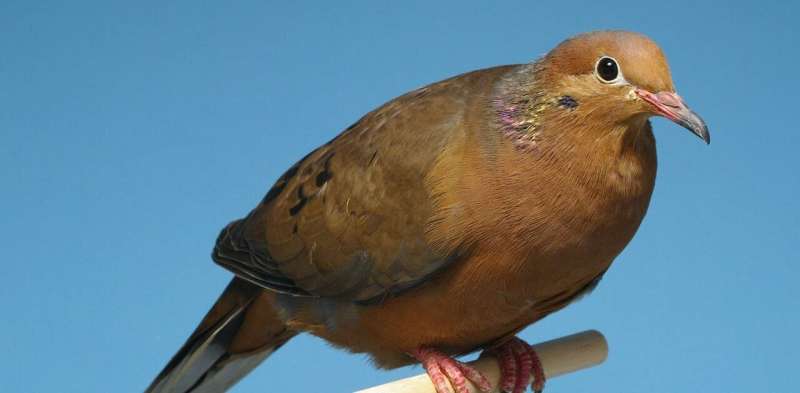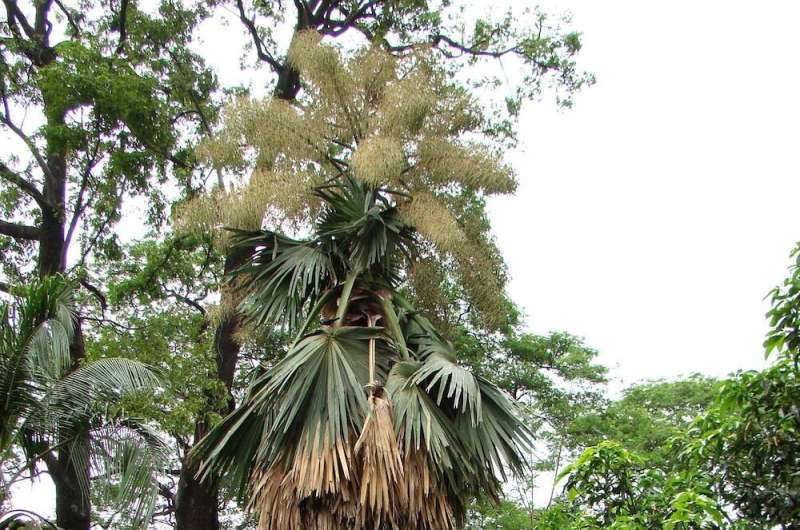This article has been reviewed according to Science X's editorial process and policies. Editors have highlighted the following attributes while ensuring the content's credibility:
fact-checked
trusted source
written by researcher(s)
proofread
The animals and plants that only exist in captivity—and why time is running out to restore them to the wild

It was April in 1981 when a party of four camped for two days and nights on the forested slopes of Mount Evermann, the central peak of Socorro, a volcanic island in the Pacific some 400 kilometers southwest of Baja California, Mexico. Their fruitless search confirmed their suspicions: the Socorro dove, an endearingly tame bird unique to the island, had disappeared, eaten by the cats of Spanish colonists, pushed out by grazing sheep and shot from the sky by hunters.
But the species had not vanished. Fifty six years prior to this search, in 1925, 17 Socorro doves had been collected from the island and transported to a bird keeper in California in the US. Somehow, almost 100 years later, the descendants of these birds—the last Socorro doves on the planet—are still with us, distributed across captive facilities in Europe and North America.
It's a strange liminal space: disappeared from the wild, yet not entirely extinct. And it's one not peculiar to the Socorro dove. Our research has confirmed that at least 33 animals and 39 plants no longer have wild populations, but survive under human care in places such as zoos, aquariums, botanic gardens and seed banks.
These species are categorized as "extinct in the wild" under the IUCN Red List of Threatened Species, the system conservation biologists use to evaluate and communicate extinction risk. It's a diverse set that includes the manicillo, a relative of the peanut only found in Bolivia; the Tali palm originally identified from a lone specimen on the campus of Dhaka University in Bangladesh; and a number of tree snails from the remote Society Islands in the Pacific Ocean.
In one sense, here is something worth celebrating: a group that has given extinction the slip. But what does the future look like for these species? Human care will not preserve them indefinitely. On the contrary, the longer they spend in captivity the more they risk becoming inbred or losing the genetic diversity that helps them resist diseases and other threats. Eventually, outright extinction looms, especially if their populations are small.
Life in captivity
A quirk in the red list means that conservationists don't systematically count the numbers of seeds, plants or animals in captivity or monitor any changes in their status in the same way we do for threatened species in the wild. An extinct in the wild species numbering in the thousands is indistinguishable from one represented by a handful of individuals. We have somehow contrived to ignore the extinction risk of the very group of species for which we are most responsible.
Our review of this group uncovered reasons to be concerned. For the most part, it seems that these populations were founded by a tiny number of individuals and would require large populations, ideally in the thousands, to best insure against future genetic deterioration and extinctions. Unfortunately, where known, most species are held in small numbers (in the hundreds or lower), and across a small number of institutions (fewer than eight in most cases).

There also tends to be a lack of coordinated planning across institutions and regions where the same species is held. This is especially true for plants, where it's not always known how many collections exist and where they are. Fortunately, there have been recent efforts by botanical gardens to share data and collaborate more closely.
Seed banks are also important facilities that can store threatened plants as seeds for many decades or even centuries. But most extinct in the wild plant species can't easily be found in online databases that might allow conservationists in different regions to work on joint recovery programs.
Conservationists, and society more widely, must do better. We know that outright extinction is a real threat. Of the 95 species that have found themselves extinct in the wild or restricted to human care since 1950, 11 have since been lost forever, like the Christmas Island whiptail-skink and the Saint Helena olive, a tree endemic to the island of the same name in the southern Atlantic Ocean.
Return to the wild
Is there hope? Perhaps surprisingly, yes. The flip side to the 11 species we've lost is the 12 that have been restored to the wild. These include the European bison, which, having disappeared from the wild in 1927, is now thriving in its native range in Eastern Europe and Russia, thanks to reintroduction efforts starting in the 1950s using stock from European zoos.
Encouragingly, more should follow: two-thirds of extinct in the wild animals and just under a quarter of extinct in the wild plants have already been released back to natural habitats. These nascent populations may not yet have reached true "wild" status by, for example, producing viable young, but this is a promising start. They show that being Extinct in the Wild needn't be a dead end: it can be a platform for long-term restoration.
But if this is the aim for all extinct in the wild species and others perched on the brink, there must be a transformation in the way they are regarded and resourced. Conservationists should continue to rescue species nearing extinction and care for them in captivity. But collectively, we must also commit to revitalizing the precarious populations under our care, with more individuals in more institutions.
Where return to the wild is a challenge, we must redouble efforts to find and mitigate threats in native habitat, or explore whether populations can be set up in new areas. Continued care of these wild populations will probably be needed.
Extinction looms but recovery is achievable. Conservation biologists have the tools for success, but need the support and attention of decision makers, funders and the broader public to deliver it.
Provided by The Conversation
This article is republished from The Conversation under a Creative Commons license. Read the original article.![]()





















